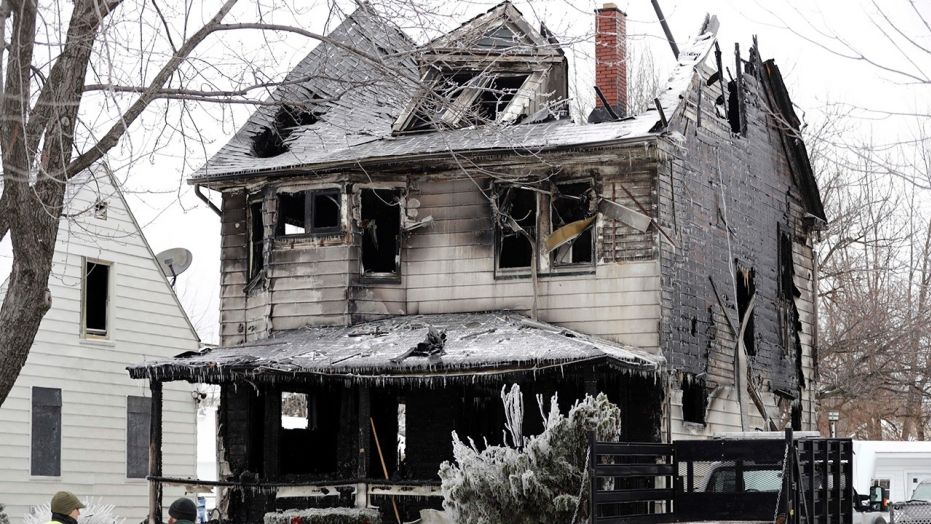As the fall hurricane season winds down and the busy “storm season” comes to a close, we often feel as though the work for the season has come and gone. However, there are still many more opportunities that can be obtained through the winter months.
Newer adjusters should be in constant contact with the firms inquiring on deployment as this particular time creates an optimal opportunity to learn as much as they can about handling different types of claims as well as getting very familiar with the interior components of a home.
Many of the winter storms that move across the US have a wide variety of impacts that will take place. These storms create damage that consists of wind damage to roofs and often allows water to enter the home. The freezing temperatures will cause pipes to freeze and break, and the snow loads can cause ice damming and possibly the structure to collapse if the snow is heavy and accumulates fast enough. All of these damages can happen in the same event.
Adjusters that are not prepared can become overwhelmed extremely fast. These deployments often take place in the most northern regions of the US like the New England area. Not being prepared for New York or Boston can be a very uncomfortable deployment.
There are 3 simple things to consider prior to deploying for a winter storm that will make things much easier to handle once you get there. These tools include tools, clothes, and your vehicle. By thinking about and preparing these simple things before your deployment to a winter storm, you will not go into the deployment blind and unprepared.
Why do I need to be prepared?
Being able to properly inspect a home during a winter storm really only requires a few more tools than your normal inspection during a wind or hail event. In reality, the things being detailed are not actually required items, but they will help you in accuracy, speed, and the quality of customer service you can provide.
Picture this, you are assigned a claim that has both room damage and interior water damage from a northeastern storm that has impacted the Boston area. You will be walking around and climbing a roof that has been snow-covered and also measuring items outside the home. You must then go inside and measure rooms that have been affected by ice damming on the eave of the roof.
The insured is not going to be thrilled when your snow-covered shoes track water across the wood flooring or the carpet. They also will likely be very upset if your wet and dirty tape measure is rolled out across the white carpet and leaves a line. You will have to walk through and measure many rooms on these deployments, so this is a process you will deal with daily.
What tools do I need?
It is recommended you invest in 2 items that will assist with this problem and will help you provide outstanding customer service.
- Slippers (house shoes) – carry around a decent pair of slippers you can easily take with you into an insured’s home and change out of your wet shoes while inside the home.
- Laser measuring tool – this will not only stop you from marking the floor or fighting furniture you’re trying to measure, but it will also increase the speed of your inspection by being able to measure the rooms electronically.
I was never one to feel I needed to spend my money when I had a perfectly good tape measure. Then I was deployed to a winter storm and quickly found the value of a laser tape measure.
What clothes do I need?
This is something not many adjusters think about until they get to a winter storm and find out what they brought with them is not enough. A lot of the winter storm locations that get impacted are in the North. These are locations such as Seattle, Minneapolis, Chicago, Cleveland, New York, and Boston. You could see temperatures as low as 20 degrees below freezing and sometimes have several weeks that may not get much above 32 degrees.
You are still expected to complete your claims to the best of your ability even when the conditions are not favorable. Of course, safety plays a role and needs to be your number one concern. But these are claims that need to be addressed, and you are expected to do so.
You will need to have clothes that will allow you to handle the outside temps during your inspection. I have always carried thermal underwear on these deployments as well as a heavy parka jacket and a stalking hat.
You will also need a pair of boots or shoes that are waterproof and have some insulation value to them. I prefer Merrill high top hiking shoes. They seem to handle all seasons well and, with a good pair of wool socks, they keep my feet warm in the cold conditions.
You can gauge yourself and how you handle the cold and prepare your luggage accordingly. The real intent is to get you to think about the elements in which you will be working, so you can prepare accordingly.
What type of vehicle do I need?
This is an especially important thing to consider when preparing for winter storms. Again, you must think about the elements. Northern regions, cold temps, snow, ice, etc. Some of us grew up in the south and do not take into consideration what the folks in the north deal with yearly as the seasons change.
Driving to and from these deployments can sometimes be an adventure of its own! Once, my wife and I along with 3 of my children left Texas, headed for Boston to work a winter storm, and crossed paths with a different winter storm that was impacting Tennessee. We spent the night in the truck that night, and it took me 19 hours to drive from Memphis, TN to Knoxville, TN in the snow and ice conditions. That trip would usually have only taken a little less than 7 hours.
The point is, you never know just how bad the roads can get or how long the trip will take. I suggest you have a 4X4 vehicle, if possible. If you do not have a 4X4, don’t stress, just be sure you are carrying a set of chains or cable for whatever vehicle you have. Be sure you know how to use them too. It is likely you will at some point need to put them on during your drive to or from one of these deployments.
Additional vehicle practices
Another good practice is to have some food and water packed in the car with you in case you end up, as I did, spending the night in your vehicle.
I have also known people to carry a small gas can in the trunk of their car just so they have a gallon or two of extra gas should they be stuck on a closed road due to wintery conditions for longer than they expected.
I never did this, because I was not a fan of gas being transported in a container that was not the car’s gas tank. If you are conscious of the conditions you are heading towards then stop and get fuel a little more often than normal and maybe fuel won’t be much of an issue.
Again, the way I have done it may not be the exact way you choose to handle it for you. The point is to get you thinking and be very conscious about where you are going, what you are doing, and how to make that happen without being caught in a mess of unexpected problems.
Conclusion
Working winter storm is not always the “funnest” of events. In fact, because it’s not always easy, a lot of adjusters choose not to partake in the winter storm events. Consequently, this will open up opportunities for newer adjusters to take advantage of the chance to go and learn.
As I have said, there is a multitude of things that can be learned from these types of storms. They can be a great asset to the folks willing to work. I encourage all adjusters that are brand new or still in the early stages of their career to think about where they want to go in their career and see the opportunities that working winter storms can offer.
Consider all the things it takes to be prepared for the deployments and go with it. You never know what taking the deployment will lead you to down the line.










